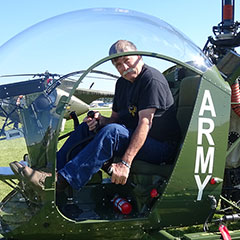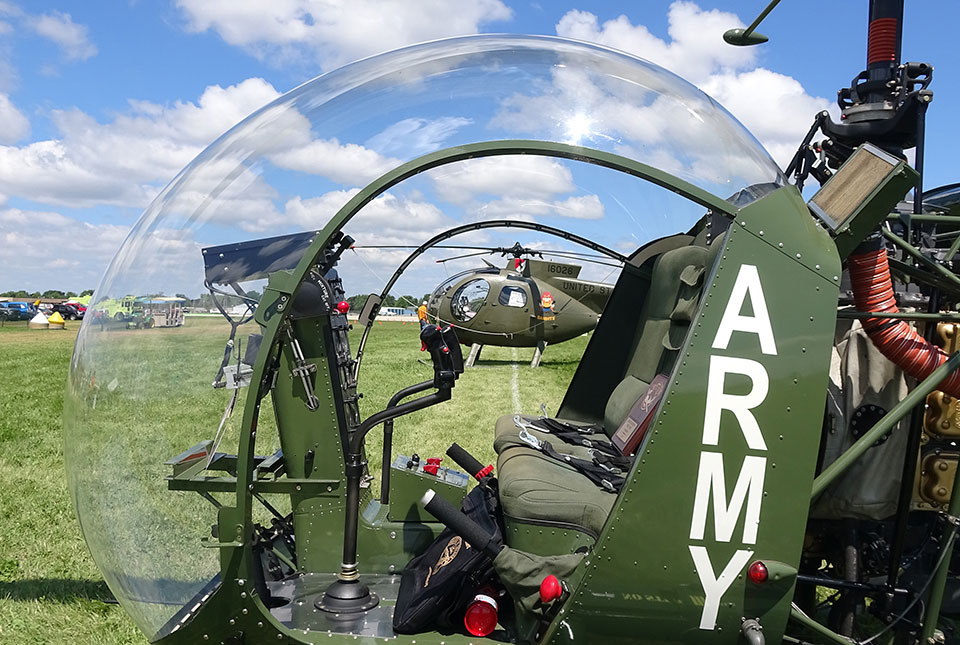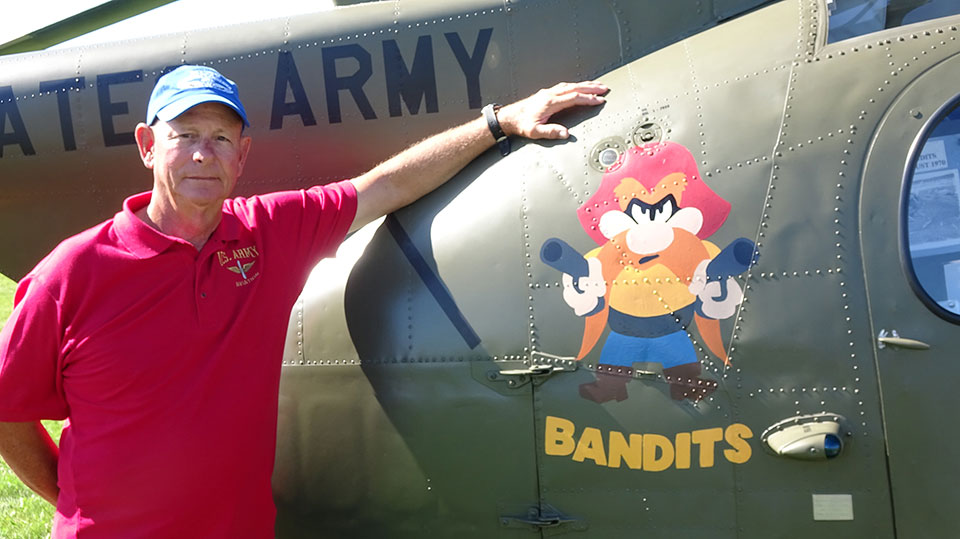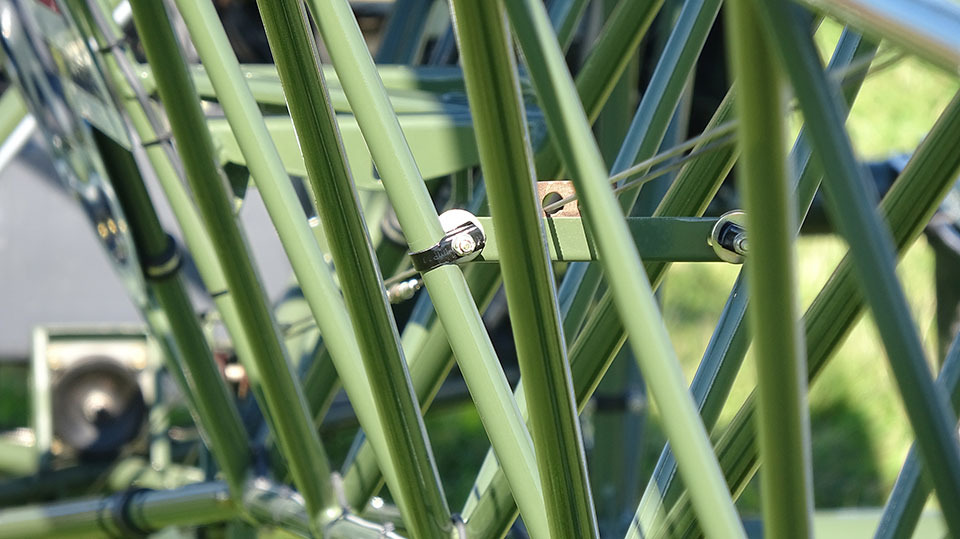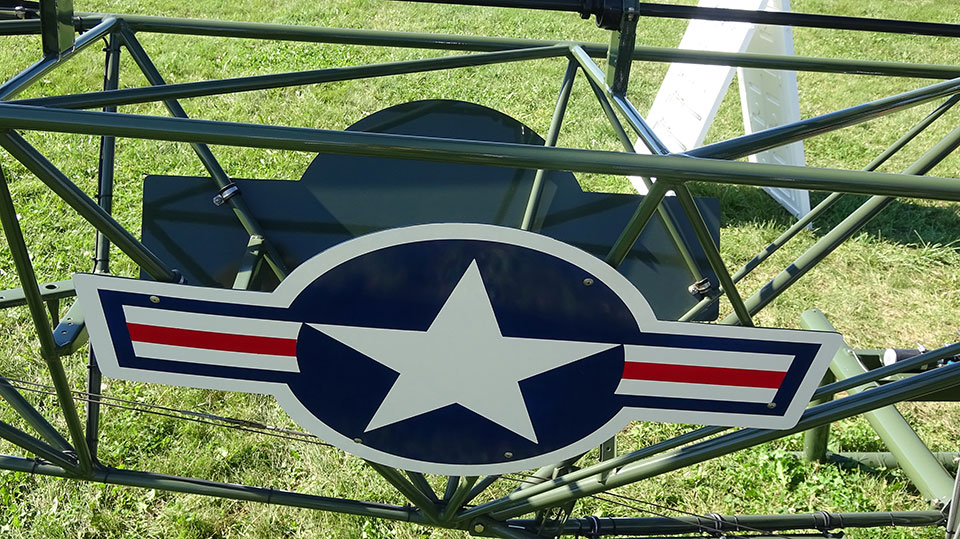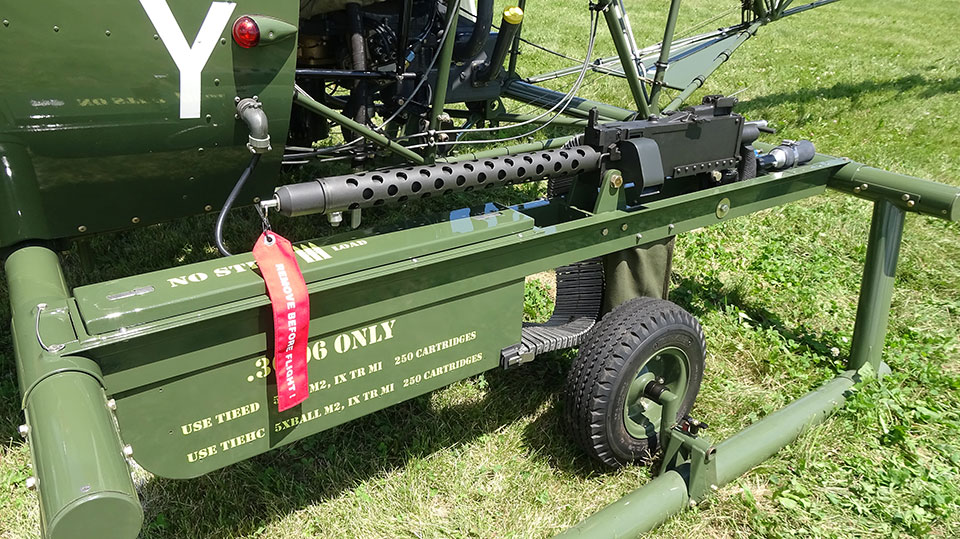When Helicopters Go to War
By Frederick A. Johnsen
July 27, 2017 - The Warbirds area hosts hundreds of ex-military aircraft during AirVenture 2017. They’re not all Mustangs and Mitchells, though. Several helicopters have settled on the grass, resplendent in military paint and markings. They bear witness to the role rotary-wing aircraft had in the military for decades.
Reid Hays, who has already flown a civilian Bell 47 for duties on his Sulphur, Louisiana, ranch, bought a former military H-13E version built in 1955. “It was airworthy, but well-worn,” Reid said. The large Bell bubble canopy had holes in it, and the logs confirmed its age with 13,000 hours. It was time for a complete restoration, which launched a research effort into the Army’s use of H-13Es.
Reid found documentation showing some Army E-models that were modified in 1957 to carry a single M37 .30-caliber machine gun on either side of the cockpit, fixed to fire forward. Tested at Fort Rucker, Alabama, those little H-13Es were the beginning of gunship helicopters, Reid said. Some went overseas, as his research indicates 60 armed H-13Es were used in Vietnam. So, the quest was on to re-create an armed H-13E. Reid found some photos and blueprints of the installation. He made his own plans for the mounts, and some of the equipment by “using pictures and scaling it,” Reid said.
The guns on Reid’s H-13E look like the real deal, but they are not full-up machine guns. They are, however, complete down to the correct solenoids for triggering them, which Reid found at a surplus outlet in Nevada. Seemingly impossible to find were the flexible feed chutes for moving the ammunition from metal boxes to the guns. Chutes for newer, shorter, .30-caliber machine guns were still being manufactured, but the old .30-06 chutes were longer, and out of service. Reid took a long shot and called a chute maker, Standard Armament, to see if it had any new, old-stock ammo chutes. It did not, but the company took a shine to Reid’s historical project, and said it could make some of the chutes new for him.
The restoration was finished in October 2016. The H-13E won Grand Champion Post-World War II Warbird at the SUN ’n FUN fly-in in Florida this spring, and now its intricacies may be viewed at AirVenture. But flying an H-13E from Louisiana to distant air shows is no piece of cake, so Reid has a custom trailer in which the H-13E slides in and out, without any dismantling.
Peter Bales from Janesville, Wisconsin, has a Vietnam combat veteran Hughes OH-6A helicopter at AirVenture 2017. Its pedigree is short: “Nobody has operated it since the Army and me,” Peter said. He acquired the OH-6 in 1997, and it required minimal work to become a flying machine after storage. Peter flushed the fuel lines, added a battery, rotor blades, “and cranked it up.” The OH-6 was eligible for a standard category license with a few minor modifications, he said.
Peter’s helicopter flies primarily in air shows and veterans events, now. It was built in 1967 and served with the 3rd Squadron of the 11th Armored Cavalry. It was damaged in battle in Vietnam and shipped back to the United States for repairs before returning to the fray. It still carries a bullet patch on its chin today. Coincidentally, Peter flew OH-6s as a warrant officer pilot in the same unit in Vietnam from June 1970 to June 1971, but his overseas tenure and that of his OH-6 did not overlap. Peter’s combat experience in OH-6s included directing artillery with an armored cavalry spotter and a door gunner aboard.
Pilots who have operated an OH-6 say it is “the most fun aircraft they have ever flown,” Peter said. For some veterans, reconnecting with the OH-6 can be almost therapeutic, he added. “They hear the aircraft running, and it’s the sound that takes them back.”
